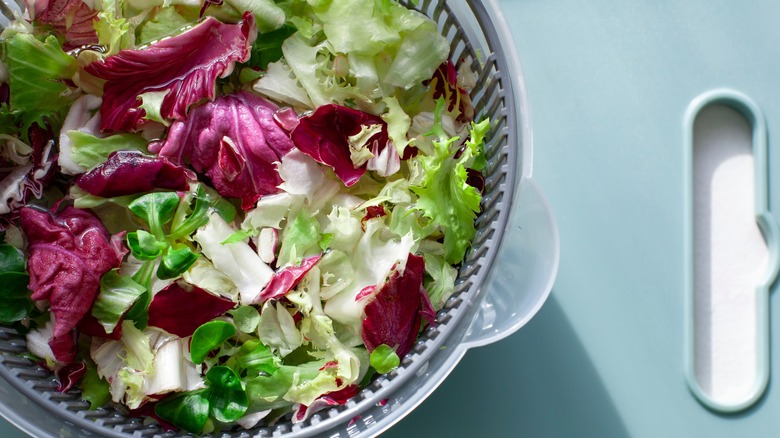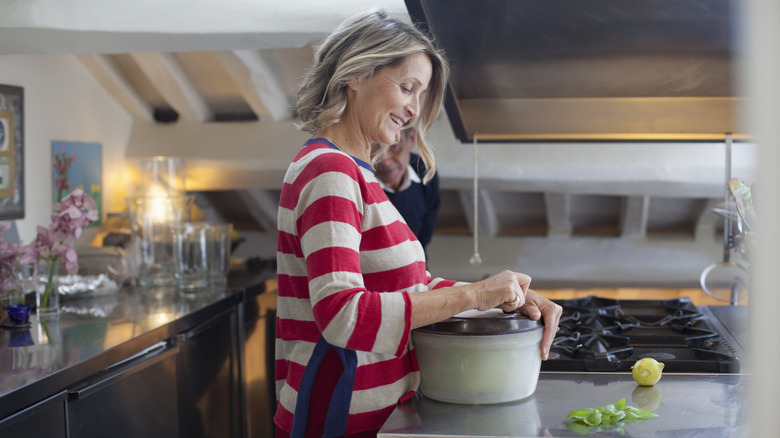Here's How To Wash Vegetables In Your Salad Spinner Correctly
At first glance, a salad spinner seems like a one-trick pony. Its primary function is to whip water droplets away from washed leaves of lettuce, so they're dry enough to grab on to some tasty salad dressing. Most people don't realize, however, that salad spinners can do all kinds of jobs like de-sogging watermelon, defrosting shrimp, and even storing spinach. Even if you only use your spinner for lettuce, there's also a good chance you're not washing your produce correctly, or you're only using it to dry things off. To get the most out of your spinner, use the bowl like a vegetable bathtub to get your vegetables squeaky clean.
Salad spinners are not particularly complicated kitchen gadgets, but for some reason there's a lot of conflicting information out there about how to use them. Some sources say it's better to rinse vegetables off under the sink, then place them in the basket of the spinner and spin, while others advise using the basket of the spinner like a colander to rinse food off under the sink. The problem is, you'll never get all of the grit out of a head of red leaf lettuce or a bunch of cilantro using only water pressure. Instead, fill the bowl of your salad spinner with water and let gravity do all the work.
Soak, drain, spin
If you're ready to start washing vegetables in a spinner the right way, the process is super easy. First, fill the basket of the spinner about two-thirds full with whatever vegetables you need to wash. Next, place the entire spinner (bowl and all) under the faucet and fill it with water. Swish the vegetables around a bit to knock any grit and pebbles loose, let everything soak for a minute so the dirt can settle, then lift the basket out of the water. Dump the water in the bowl into the sink, then replace the basket inside the bowl and start spinning.
Cleaning vegetables with a salad spinner is almost foolproof, but always make sure to leave some space in the basket before you fill the bowl with water. The goal is to get the dirt to fall to the bottom while the clean vegetables float to the top, so an inch or so of space will give you a good separation between the two. You'll also need a little wiggle room inside the basket so that you can move the veggies around; just like a baby in a bathtub, a little extra swishing and splashing will shake out all the dirty particles.


